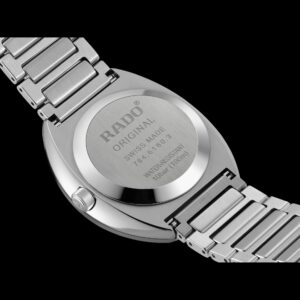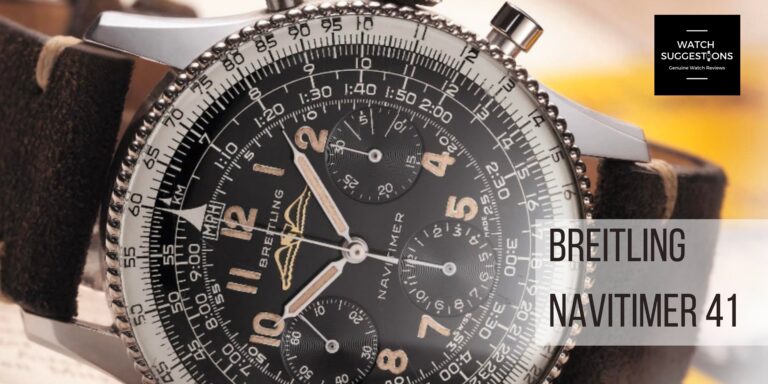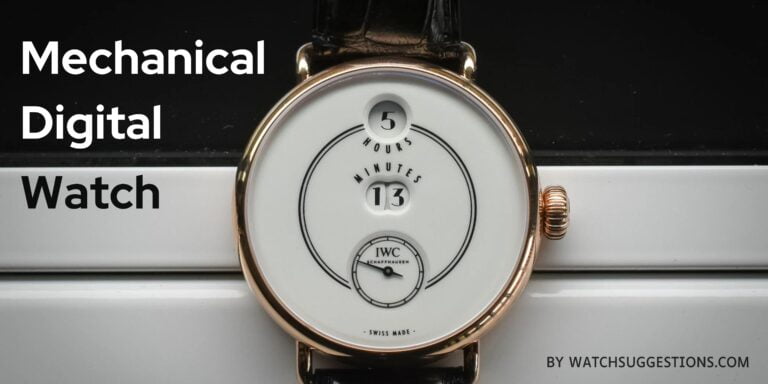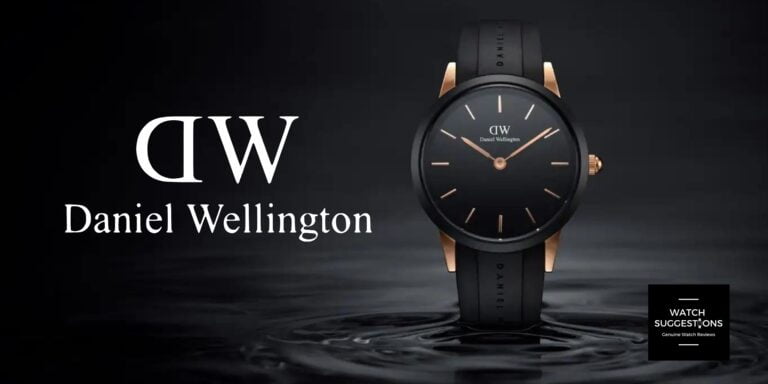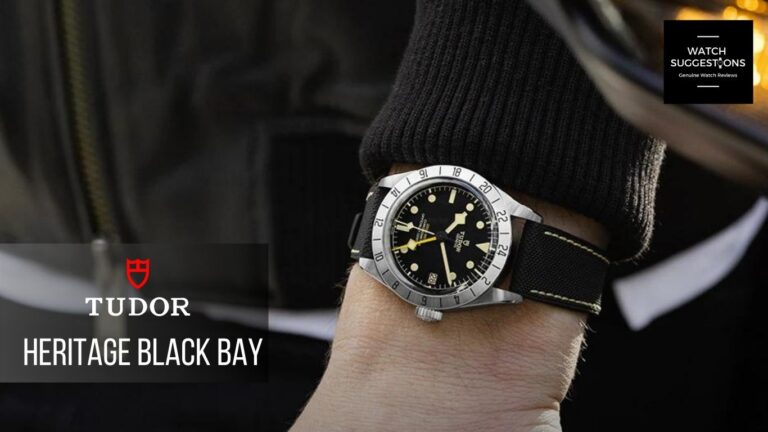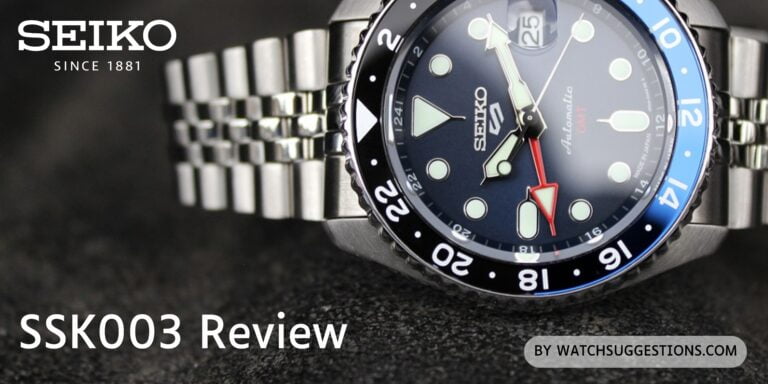Rado Watches For Men: Is This Luxury Brand Still Worth It in 2025?
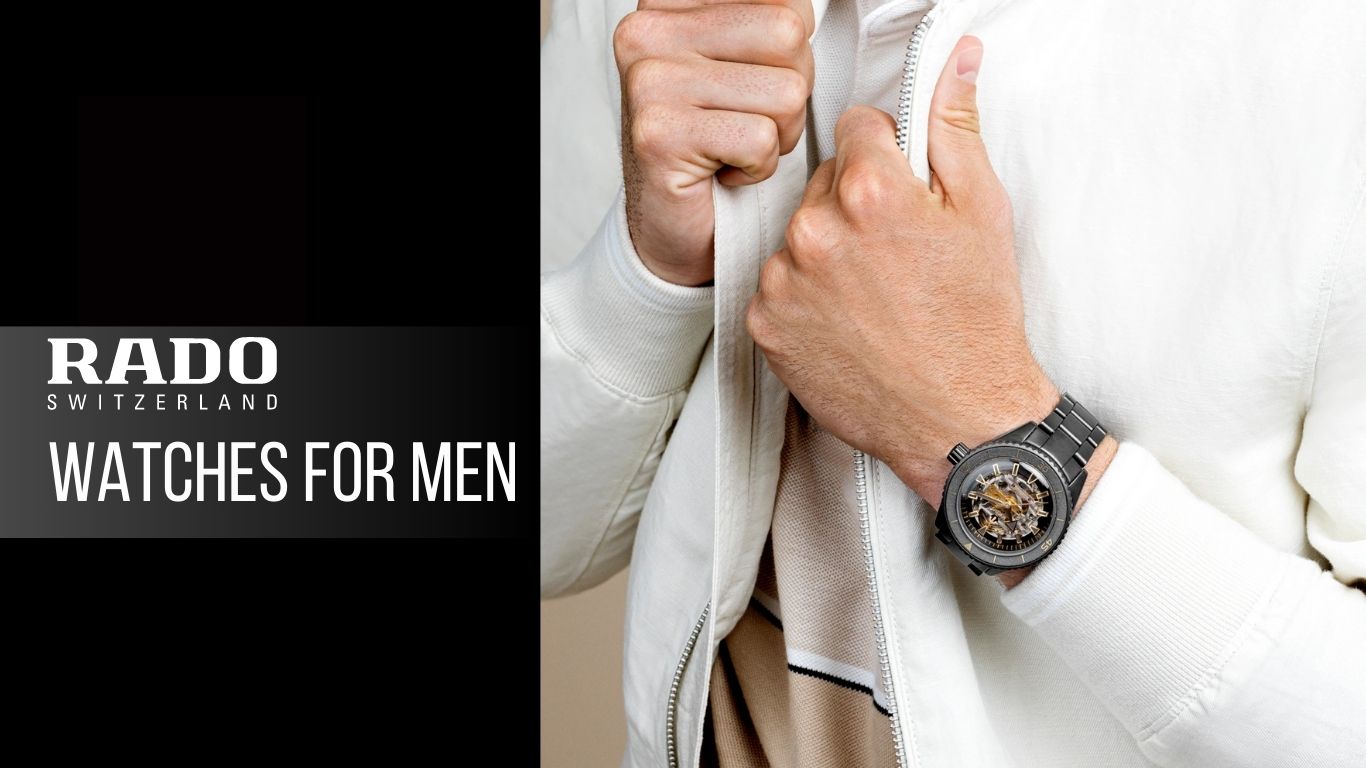
Rado Watches For Men. Is that what you are looking for?
If you’re simply finding Rado looks interesting, that is reasonable. Even though the company is more than 100 years old. It was at its best in the United States more than four decades ago.
Asia has long been Rado’s stronghold, where it is one of the most sought-after brands.
To put Asian support in perspective. Let me say this: Despite producing over 500,000 watches per year. Rado is still relatively unknown in the United States.
This demonstrates how much Rado is favoured in Asia. If you’re thinking about buying a Rado watch.
You might have questions about the quality, and price. Maybe even a little bit about the history of the company.
Fortunately, that is the topic of this article. We’ll talk about Rado’s history, what sets Rado Watches for Men apart, and whether or not their watches are worth the money. Also, we’ll take a look at some of their watches.
Rado watches: The History of the Company
If you don’t know much about Rado, you might be familiar with it by its original name: Still haven’t heard of Schlup & Co.?
Schlup & Company was founded by three brothers. Werner, Fritz, and Ernst Schlup in 1917. They established the business in Lengnau, Switzerland—its current headquarters.
Schlup & Co. was one of the world’s largest and most reputable watch movement manufacturers by the end of World War II.
In the 1950s, Schlup & Co. changed its name to Rado, and during this time, the business took off. While in 1957, the Golden Horse collection was released.
And in 1958, the Green Horse collection was released. Over sixty nations came under Rado’s control at this point.
Rado began working on the identity of its brand by the 1960s. The DiaStar 1, was marketed by the company as the first scratch-resistant watch. They became one of its most well-known creations.
About DiaStar
The DiaStar caused quite a stir at the time. As the watch industry was unfamiliar with novel materials. Like the metals and sapphire glass Rado was using.
Taking advantage of the company’s reputation for creating scratch-resistant watches. Rado introduced more innovations in the 1970s and 1980s.
In 1972, it introduced a DiaStar in gold. In 1976, it introduced the Dia 67. This watch featured an innovative sapphire crystal that ran from edge to edge.
The year 1986 saw the arrival of the Rado Basic. It had a game-changing fired material in the armband to safeguard it from scratches.
The release of Ceramica marked the beginning of the company’s focus on scratch-resistant materials throughout the 1990s.
The Ceramica’s case and armband were sapphire precious stone and artistic.
Following the Sintra in 1993. Rado presented a high-tech ceramic once more with the Ceramica in 1998. A watch without metal had an intense metallic colour as a result.
Rado’s timeline covers roughly the last twenty years. It includes more cutting-edge materials and processes.
The Rado V10K, which they released, scored 10,000 on the Vickers scale. This made it truly scratch-resistant.
The company switched its focus to watches with crownless cases and thinner cases. Swiping your fingers across the dial to set the eSenza Touch, which does not have a crown, is an option.
The Rado DiaStar Original
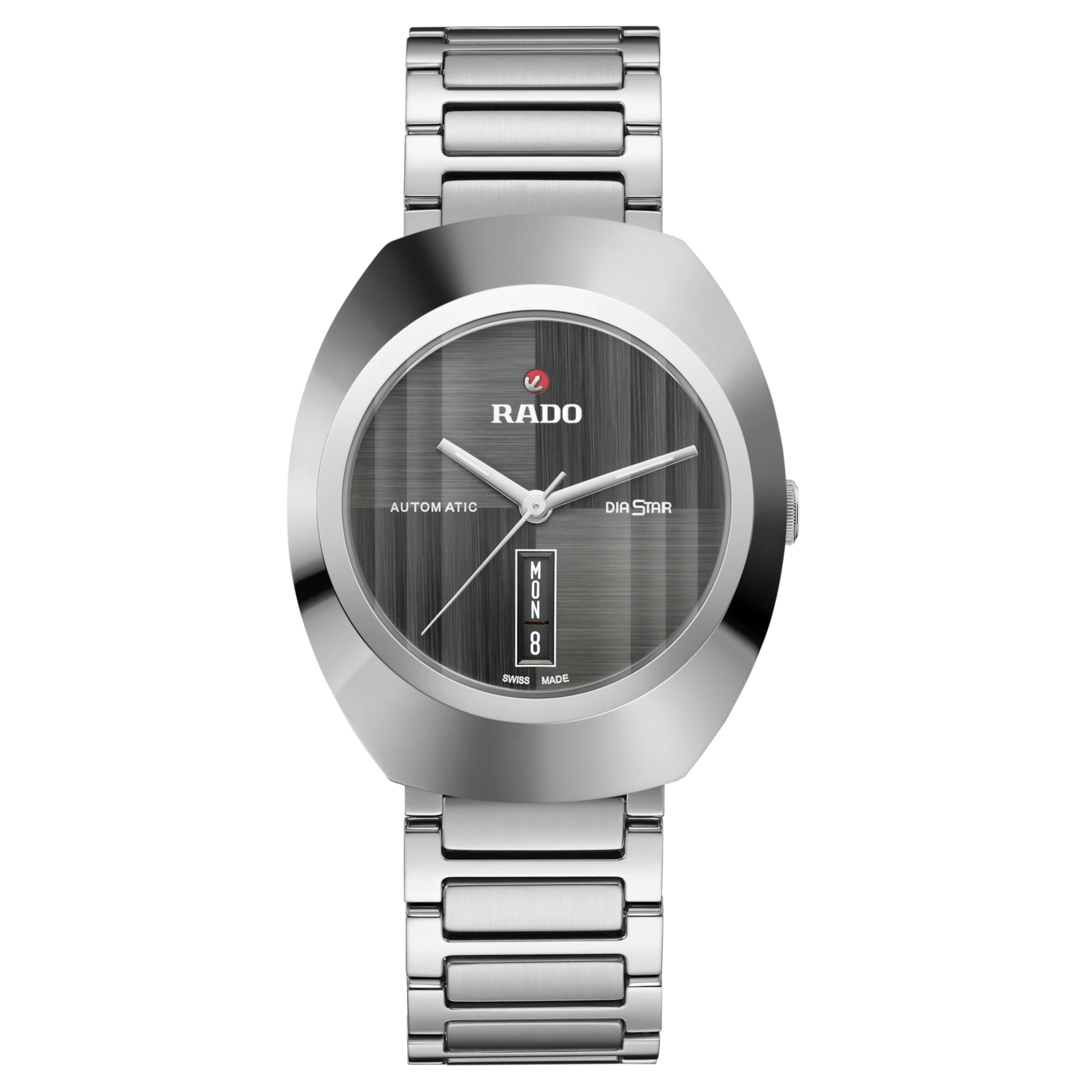
Hardmetal is an alloy that Rado patented in 1962. When it introduced the DiaStar. The first timepiece ever made with a sapphire crystal and scratch resistance.
Since then, the watch has been produced continuously. It has become the Rado model that has sold the most units. Hardmetal was scrapped for the Jubilee watch, which debuted in 2022.
Rado, “booked” even harder star material. So to feature on the Rado DiaStar Original 60th Anniversary Edition. The bandmates it accompanied. Ceramos is its name.
Scratch Resistance
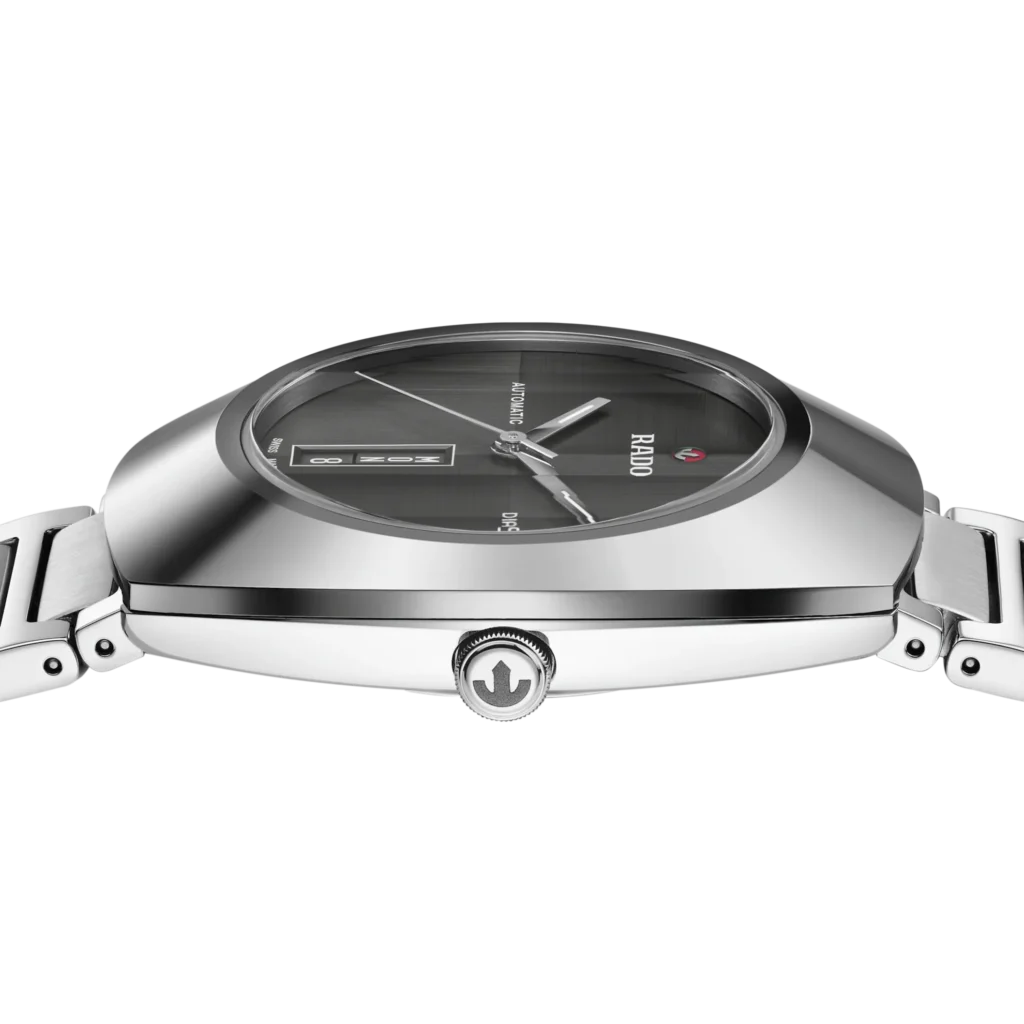
It is fascinating to learn that the original DiaStar’s peculiar. Almost UFO-like shape was a case of material following form.
Hard metal’s base material, tungsten carbide, break down much more easily than conventional steel. Thus, Rado reduced the likelihood of the alloy shattering.
When it began working with Hardmetal by designing a bezel and case that flowed smoothly. When it was used to make the D-Star case in 2011, Ceramos made its debut.
Due to its extreme hardness, this high-tech mixture of ceramic and metal alloy is light. Plus it is resistant to scratches and polishable.
But, the process is time-consuming and labor-intensive. But, compared to mirror-polished Hardmetal. The end product has a metallic shine that is brighter and more evident.
Available Colours
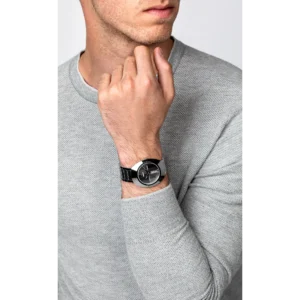
The DiaStar Original 60th Anniversary Edition. Along with three DiaStar Original models with three dial colours.
These are two of four new watches Rado is releasing. So to celebrate DiaStar’s 60th anniversary.
The quartet’s stylish “Designer Edition” is the special anniversary-edition DiaStar (R12163118). Häberli gave himself the most creative freedom with this watch.
It brought about a cone-shaped bezel in radially brushed Ceramos. The matte bezel has a more industrial appearance than the original “glam metal” bezel.
Making it look more like T. Rex than Nine Inch Nails. The faceted hexagonal sapphire crystal, with its six bevels. It represents DiaStar’s six decades of existence. This is the next striking feature.
They also give the watch a jewel-like appearance. Also, the crystal’s reflections stand out against the brushed bezel in a dynamic way.
Additionally, the day/date indicator and the tapering hands. They are sleeker than the other three DiaStar models. On the circular brushed metallic grey dial.
It has a colour scheme of grey and natural-colored Super-LumiNova at 6 o’clock.
The day is not specifically displayed by the date indicator. Rather, a series of dark grey Super-LumiNova sign blocks show it graphically.
Because Monday or Sunday might be the first sign in the minimalist window. You can also choose the day of the week with this setup.
The three other brand-new DiaStar Original models have a more conventional appearance They are attached to a steel bracelet.
But, when I refer to “traditional,” I am referring to the futuristic 1960s tradition. It is still very much relevant in 2022.
The dials of the blue, grey, and green references R12160213, R12160103, and R12160303. They are brushed in two directions.
Under the parallel-faced sapphire crystal with an anti-reflective coating inside. The metallic shine comes to life. When you move the watch, a small fascinating spectacle is vibrant.
It’s vibrant but does not appear too reflective. The conventional day/date indicator can be found here. In its native vertically striped habitat.
Case And Bezel
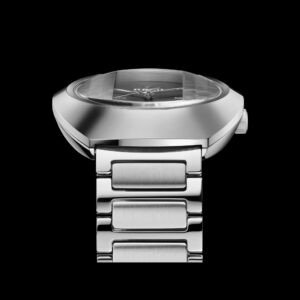
A Ceramos bezel, a steel middle case, a case back, and a crown are all found on these watches. The DiaStar is now more streamlined and slimmer as a result of Häberli redesigning the side of the case.
Compared to the models in the current collection. The three shiny DiaStar Original models have a thickness of 12.1 mm.
The celebration Release measures 12.3mm thick. Due to the somewhat taller facetted gem. But, the case’s diameter and length remain the same, at 38mm and 45mm, respectively.
The watch feels more like it’s “in” the wrist than it is “on” it because of its a little different shape and thickness.
And in my view, that is a positive aspect when wearing a watch with such a distinctive shape and shine.
Yes, that is correct: There is no case back with screws. But, the brand-new DiaStar Original can withstand 100 meters of water.
Movement 
The gold-plated Rado calibre R764 can be found inside all new DiaStar Original models. It is an automatic movement with an anti-magnetic Nivachron hairspring.
It has a power reserve of 80 hours. This exceptional form of the Sample Gathering’s common Powermatic 80 development. It takes cover behind a shut snap-on case back.
The Rado Captain Cook Ceramic Diver Olive Green
Another highlight in the collection of Rado Watches for Men is the Captain Cook High-Tech Ceramic Diver.
ComaDur produced Captain Cook’s ceramic. It receives 1,250 points on the Vickers scale which measures hardness.
You can get a sense of how tough ceramic is by comparing that to the 152 points that 316L stainless steel receives.
But, paradoxically, despite its actual hardness, the ceramic Captain Cook feels almost soft. It’s smooth, warm to the touch, and even reassuring.
The problem with ceramic watches is this: It immediately makes me feel at ease. But, the complexity of creating that love-at-first-touch sensation.
That’s due to its instant likability. What’s more, that is a genuine disgrace since I feel that the ceramic enhances the watch. It is an evolutionary material when compared to traditional alloys.
The Case And Specifics
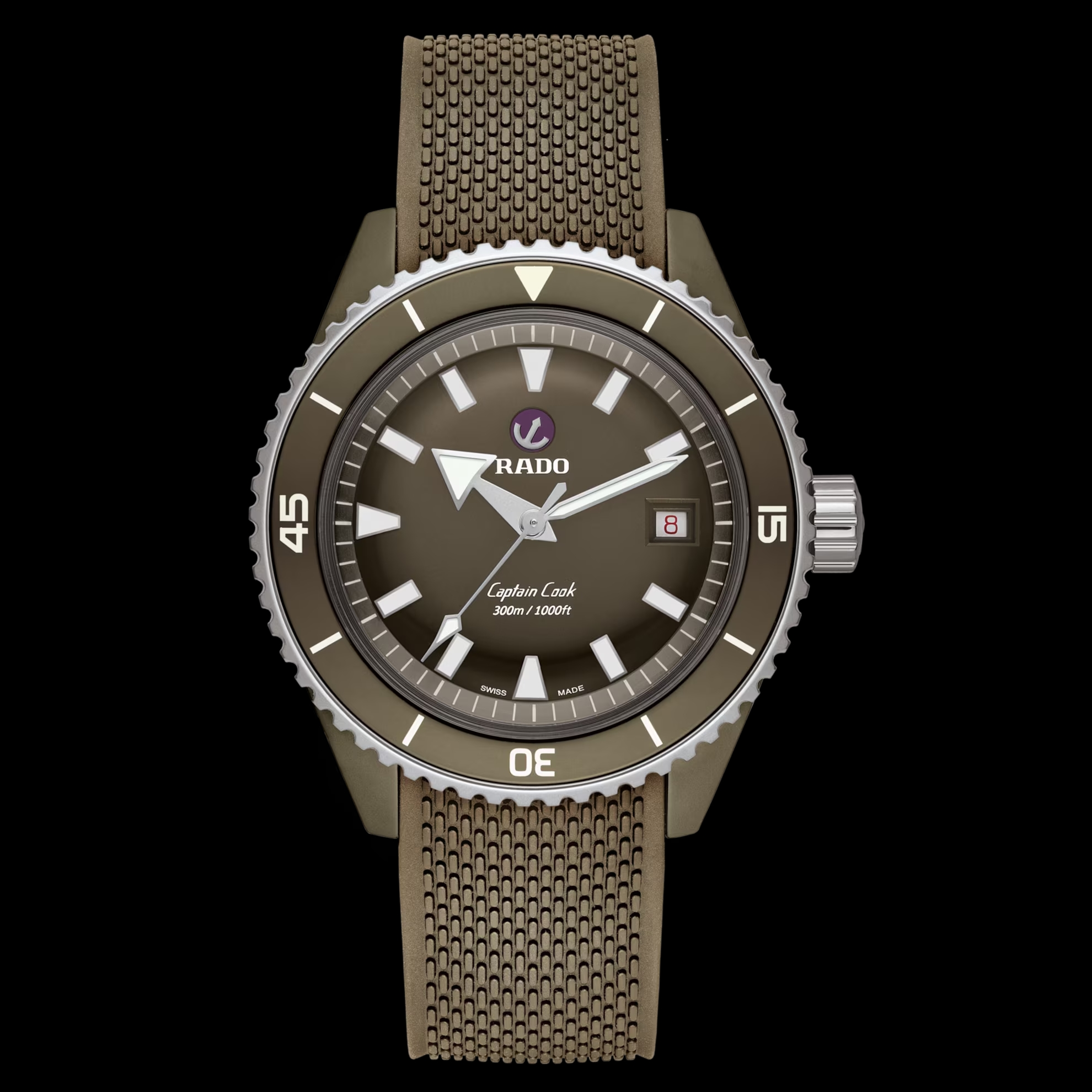
The Captain Cook High-Tech Ceramic Diver is essentially a 300-meter dive watch. A watch with a ceramic case.
Yet, material, variety, and size. The watch estimates a contemporary 43 × 14.6mm with a carry-to-drag length of 49.8mm.
This makes it a watch that interfaces customarily with the space age. The three-hand automatic calibre R734 is inside the case. It is based on the ETA, it can be the watch’s most traditional feature.
Even this movement is a piece of cutting-edge watchmaking. Thanks to its trademarked Nivachron anti-magnetic hairspring and 80-hour power reserve.
Dial And Bezel
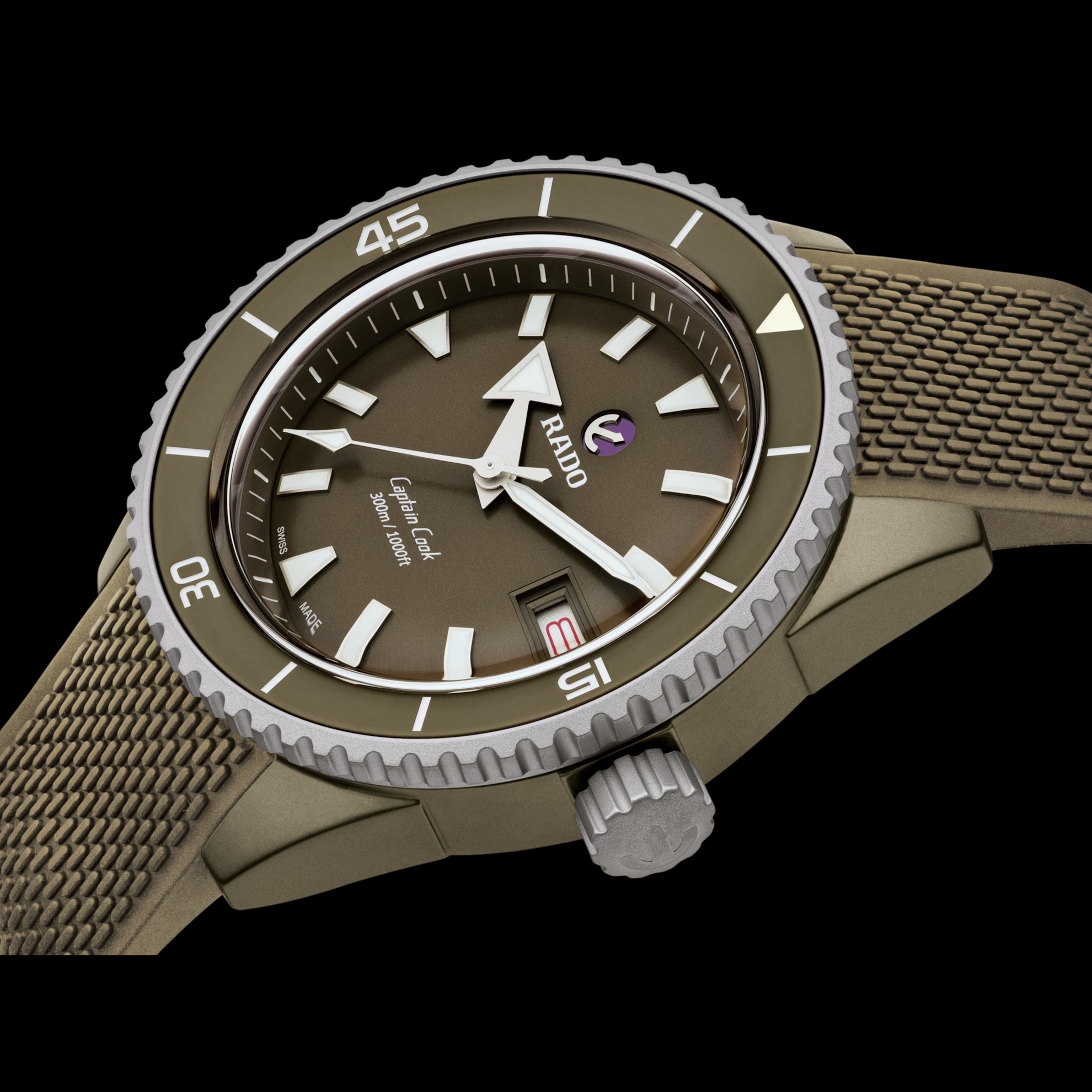
Those who have met the Captain before will recognize the watch face. The inward-tilting bezel, numeral typeface and stout hands.
Also not to forget the markers, proud, bright white triangles on the hour hand and bezel. Oh yeah, even the little domed sapphire crystal. All these contribute to the impression of the 1960s.
The anchor logo on the dial, which rotates when the watch is moved, is another Rado trademark. On the crown, which is also an anchor, and on the screw-down case back.
It’s made of circularly brushed titanium. You’ll find more of the same markings. Two stylized seahorses facing inwardly can be found on the watch’s back.
The watch’s nautical inspiration and capabilities. These are brought to mind by the elegant pair.
The bezel’s colour adds visual diversity and has a solid feel. The robust bezel’s precise, precise, and bright markings are remarkable. The bezel is first laser-etched.
After that, a special lacquer is applied to the inside of the engraving. This secures it permanently to the bezel’s ceramic. It can withstand a hit because it binds so strongly.
Even though it’s too beautiful to be used for manual labour in the water. But that’s exactly what you need and want from a nautical-themed tool watch.
Stainless steel is used to make the solid folding clasp The colour blends well with the ceramic crown. Also the notched 120-click unidirectional bezel on the side.
Rado Watches: Pros and Cons
The aim is to find out whether Men’s Rado watches are effective. Innovation and one-of-a-kind materials are great. But they don’t always translate into high-quality design.
Let’s take a look at what we like about Rado watches and what we might change.
Pros:
Unique Materials
A watch made of unique materials is cool in its way. There also come bonus points. From the knowledge that you are wearing an amazing watch.
A watch that is not only resistant to scratches. But also distinct from all other stainless steel watches. Rado is still doing well in this area.
Price Point
Rado watches are genuine Swiss-made watches with top-notch craftsmanship. Not to forget the high-end materials, and Swiss-made movements.
It is quite remarkable that the majority of Rado’s watches can be purchased for less than $3,000 (close to $2,000, in fact).
Even though a $3,000 price tag is still prohibitive for the majority of guys. The value of craftsmanship and materials does not diminish.
Regardless of how prohibitive it may be for guys like you and me, the price point is more than fair.
Cons:
A Little Too Big
A lot of Rado’s watches are a little too big (42 millimetres or more). Although diving and timing bezels. They make them look larger on the wrist, they wear a little smaller.
That won’t be a problem if your wrists are big, but guys with smaller wrists won’t have as many options.
The Plan
You must be into exceptional watches with super current plans. So to see the value in a considerable lot of Rado’s contributions.
The majority of guys find them to be a little too much. So this is a point-scoring situation.
Are Rado Watches for Men Worth It?
Without of doubt, Rado watches are great watches. They have unique materials, top-notch craftsmanship, and excellent movements.
Additionally, they are a great deal for the sub-$3,000 watch market.
But, Rado watches are also very, very special, so you need to find a watch you like.
It must be a piece that complements your aesthetic. There aren’t many of us who are willing to gamble on a piece we only have mixed feelings about the price.
To help you determine whether a Rado watch is right for you. We choose a few of the brand’s most well-liked and sought-after creations for you to compare.
Keep in mind that Rado’s website contains many more designs. The items we highlighted here are through the eyes of a watch enthusiast.

